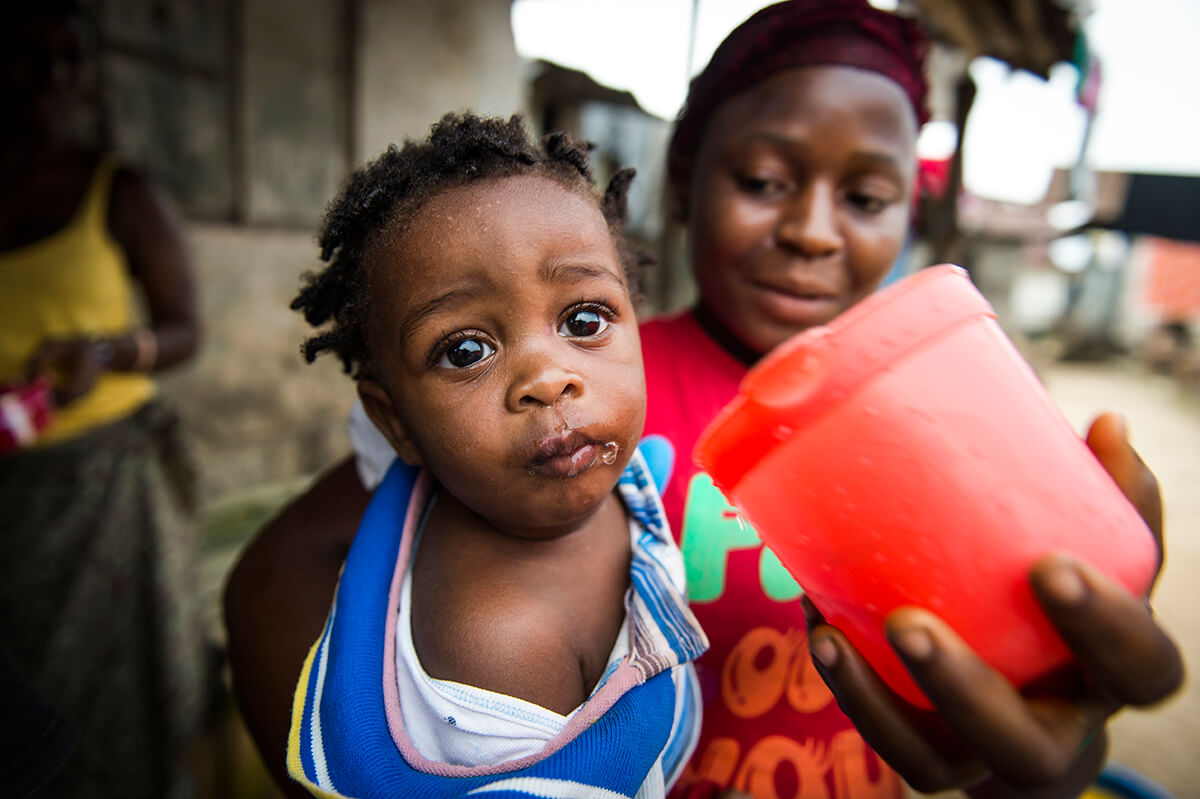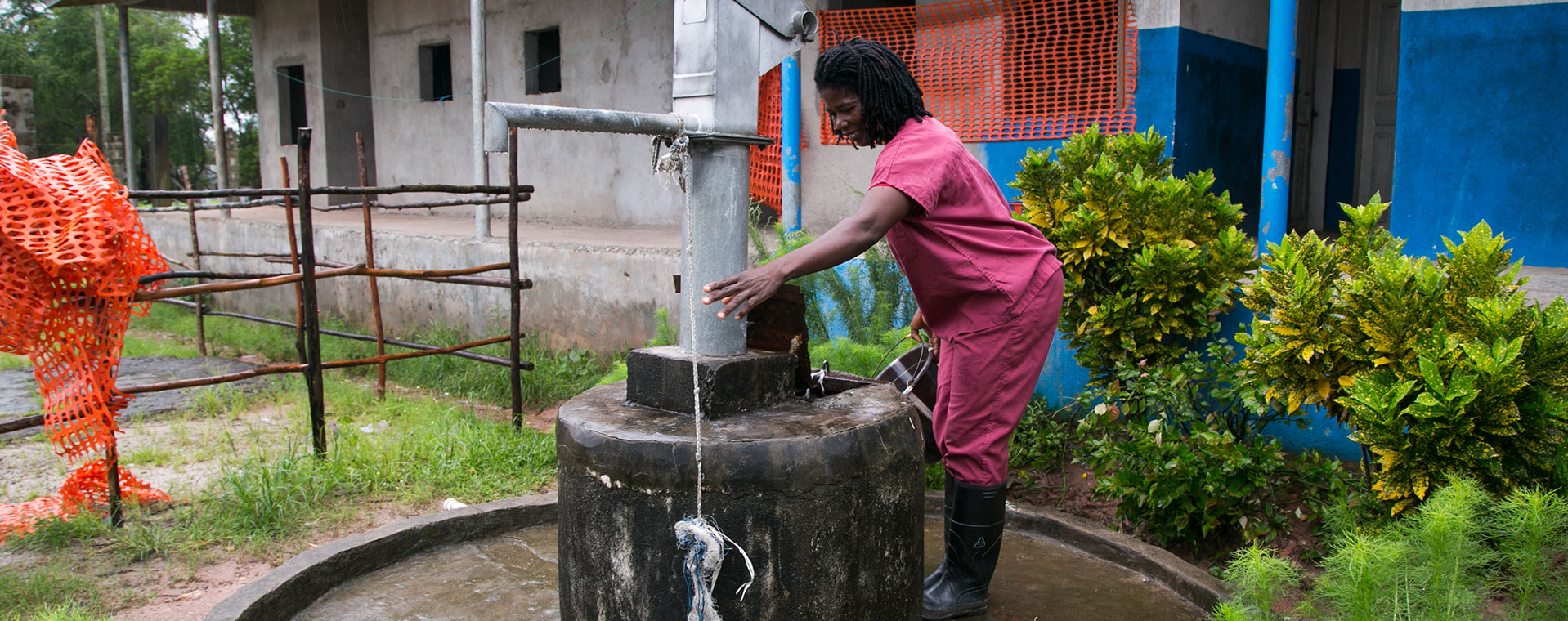
How to Improve and Measure Water Quality in Healthcare Facilities
STORIES |
Water Mission
In 2014, at the height of the Ebola epidemic, Water Mission began partnering with UNICEF to provide safe water treatment systems to hospitals, healthcare centers, and Ebola treatment units in Liberia.
The J.J. Dossan Memorial Hospital, which served more than 150 patients a day, was a tragic example of the way that patients and staff at under-resourced healthcare facilities around the world suffer without safe water.
“Patients or family members had to leave the hospital and retrieve dirty water at their homes or from a distant borehole,” Dr. Obiazi Francis, a general physician at the hospital, told us. “We had very little water and the storage tanks were moldy and unclean — so we couldn’t use them for cooking or drinking, let alone patient care. We were extremely limited in the [medical] treatment that we could really provide.”
A World Health Organization and UNICEF study of healthcare facilities in 54 low- and middle-income countries found that 38 percent lacked access to an improved water source. Furthermore, even those facilities that rely on improved water sources without some form of treatment may still be at risk. Water Mission has found that over half of the groundwater samples we’ve taken from drilled and “protected” boreholes have still tested positive for fecal contamination.
This lack of reliable and accessible safe water creates an especially dangerous situation for vulnerable patients who are susceptible to additional infections spread by contaminated drinking water, unsterilized instruments, and limited handwashing facilities. In fact, research published in The Lancet estimated that one out of every six patients in low-income countries contracts a healthcare-acquired infection.
As these studies illustrate, low water quality in healthcare facilities can negatively impact the health of sick patients and increase the spread of disease. It’s critically important to establish safe water services that incorporate consistent water treatment and quality testing in these settings before – not after – an outbreak occurs.
The good news is that simple and transformational water treatment solutions are available and can be incorporated into healthcare facility water supplies. Several devices can passively add chlorine to water, which eliminates the risk of most life-threatening waterborne diseases and can be used to maintain hygienic conditions and prevent the spread of illnesses like Ebola. One such product, which we use in Liberia and in our programs around the world, is the Water Mission erosion chlorinator. This device adds chlorine residual to water as it is pumped from a groundwater source and stored in a tank, ensuring that all water distributed through taps and faucets is safe. With this solution, there is no need to batch-mix chlorine solution every day, which can lead to inconsistent results. Instead, the device is simply refilled with chlorine tablets every few weeks.
For water sources with variable turbidity, we may use a multi-stage treatment system which includes flocculation, filtration, and chlorine disinfection. One of these treatment solutions is included in every safe water project we support.
Water treatment solutions are only as effective as the systems that are in place to adequately and routinely test and monitor the water quality. Water quality testing can be done with simple, low-cost products, which can easily be obtained and conducted by healthcare facility staff after some basic training. This training empowers healthcare providers to test their own water and ensure it continues to be safe to drink.
Since 2014, Water Mission has worked in Liberia’s healthcare facilities, serving more than 19,500 people to date with 35 safe water projects. Now, with solutions that consistently and appropriately disinfect the water, healthcare workers have reliable access to safe water to protect patients and minimize further infections.
“We went from pumping two hours of unclean water to 14 hours of safe water per day,” Dr. Francis told us after the safe water system was installed at J.J. Dossan Hospital. “Now, all of the wards have abundant water for all of our needs. It’s changed our ability to serve and treat patients. We can actually bathe our newborns, properly cook our food with water, and offer a drink of water without fear of the patient getting sicker.”
By Andrew Armstrong, PE, Director of the Global Water Center at Water Mission
